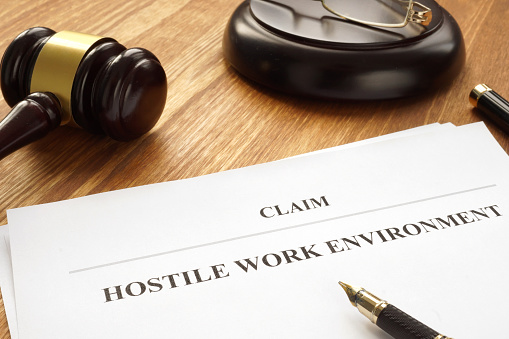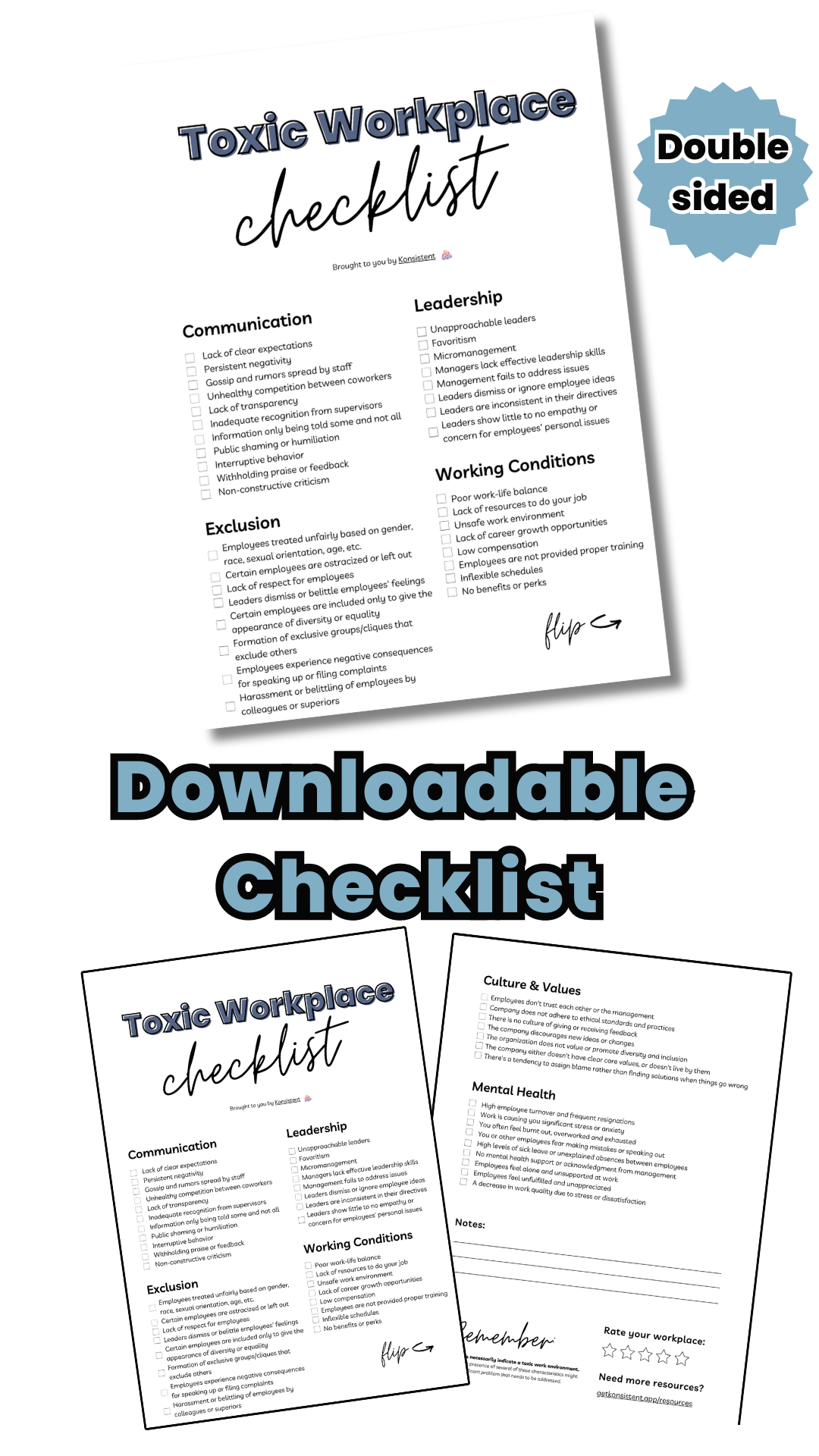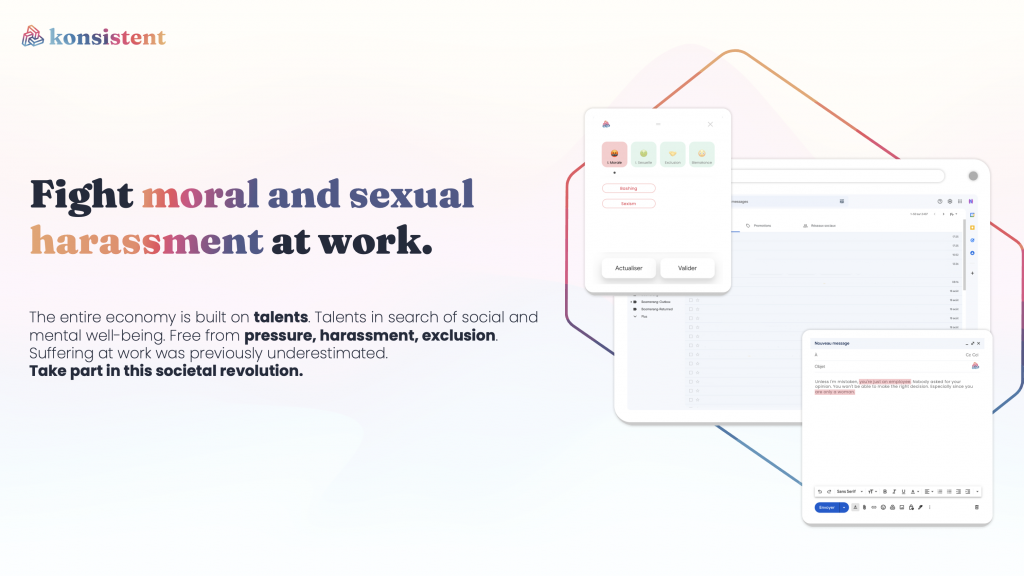5 signs of a hostile work environment and how to prevent it
7 November 2022 | 4 mins read
- Employee resources
- HR resources
We’ve all heard of the term “hostile work environment” before, probably in an employee onboarding training or in a conversation with a coworker. But what exactly is it, and how can you recognize the signs of a hostile work environment?

A hostile work environment can be defined as an environment in which employees are subjected to hostile, offensive, or intimidating behavior at work. This type of toxic workplace can have many negative impacts on employees, including lowered productivity, high stress levels, and low morale.
In this post, we’ll take a look at some of the key signs of a hostile work environment and how to respond if you think you may be dealing with one yourself.
Are you feeling stressed, unvalued, or isolated at work but can't quite put your finger on the root of the issue?
Our comprehensive 'Toxic Workplace Checklist' could provide the clarity you're seeking. This checklist, designed by our language detection experts at Konsistent, pinpoints key signs of an unhealthy work environment, empowering you to better understand and navigate your professional sphere. Download your free copy today, and take the first step towards a more inclusive, respectful, and supportive workspace.
What is a hostile work environment?
According to United States labor laws, a toxic work environment is defined as a workplace where there are several instances of harassment and discrimination, creating an unsafe and hostile work environment for employees. This can include hostile remarks or behaviors directed towards a particular group of people based on race, gender, religion, pregnancy, sexual orientation, age, or any other identifying characteristic.
The Equal Employment Opportunity Commission (EEOC) defines hostile work environments as those “that unreasonably interfere with an employee’s work performance or create an intimidating, hostile, or offensive work environment.” However, this only applies to ongoing hostile behaviors or harassment that have been directed towards an individual or group of individuals.
This means than an employee may be able to bring a hostile work environment claim if they are subjected to repeated hostile behaviors at the workplace, but may have a hard time winning a legal case in the event of a one-off incident that does not rise to the level of harassment or hostile environment.
Related read: Why is grace necessary in the workplace?
Examples and signs of a hostile work environment
Recognizing the signs of a hostile work environment can be difficult, as these types of toxic workplace situations often go unnoticed by management and HR directors until it’s too late.

Knowing the tell-tale signs of hostile work behaviors can help you avoid being victimized yourself, and can also allow you to take action if you suspect that others in your workplace are experiencing hostile behavior.
But how can you tell if you are dealing with a hostile work environment?
Some common signs include offensive jokes and comments, hostile behaviors like bullying and intimidation, and pervasive discrimination against particular groups of people. Other signs might include:
- Verbal harassment or hostility, such as offensive jokes, slurs, or condescending comments
- Exclusion from professional events or activities because of race, gender, religion, or other protected status
- Bullying and intimidation, such as hostile behaviors like stalking or threatening others
- Inappropriate touching or physical contact that makes you feel unsafe
- Negative or hostile treatment of coworkers because of their race, gender, age, sexual orientation, pregnancy status, or any other identifying characteristic.
Related read: Is yelling in the workplace harassment?
If you suspect that you or others in your workplace are dealing with a hostile work environment, it’s important to speak up and take action right away. You can start by reporting the hostile behavior to your manager or HR director, who should be able to address the situation appropriately. Additionally, you may wish to consult an employment lawyer or other professional for guidance on how to best handle your hostile work situation, as well as whether you may be eligible to file a legal claim for damages.
Whatever course of action you choose, it’s crucial to remember that no one deserves to have their safety and wellbeing compromised in the workplace, and that speaking up against hostile behaviors is an important step towards creating a more inclusive and safe working environment.
Tips for preventing a hostile work environment
Let’s face it – no one wants to work in a toxic workplace.

But if you’re worried that your current workplace might be hostile or toxic, there are steps you can take to reduce the risk of being subjected to hostile behaviors.
Some key tips for preventing a hostile work environment include:
1. Speak up and stand up for yourself
If you encounter hostile remarks or behaviors at work, make it clear that you will not tolerate them. This sends a strong message to your coworkers and managers, and can help prevent hostile behaviors from escalating in the future.
2. Educate yourself about your legal rights
Hostile work environments are often illegal, but knowing what constitutes harassment or hostile behavior can be confusing. Do some research on the laws surrounding hostile work environments in your area, and be proactive about seeking help if you believe you are being subjected to hostile behaviors at work.
3. Find support
Working in a hostile environment can be a very isolating experience, especially if the hostile behavior is coming from someone who is in a position of power or authority. Seeking out support from trusted coworkers, friends, or family members can help you feel less alone and more confident in your ability to speak up against hostile behavior.
By being aware of the signs of a hostile work environment and taking proactive steps to prevent these behaviors from occurring, you can create a positive and productive workplace for yourself and your coworkers.
Related read: What is alienation in the workplace?
Protect your employees from harassment with Konsistent
At Konsistent, we know that your top priority as an employer is to create a safe, harmonious work environment for your employees.
That’s why our harassment prevention communication software provides real-time training and guidance on harassment and other forms of discrimination in the workplace. Our plugin monitors internal communications and flags harmful communication in real-time, empowering you to take action before hostile behaviors have a chance to escalate.
With Konsistent, your employees will be equipped with the knowledge and resources they need to safely navigate workplace issues like hostile work environments, so that they can focus on doing their best work.








